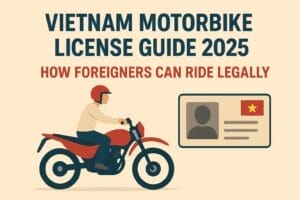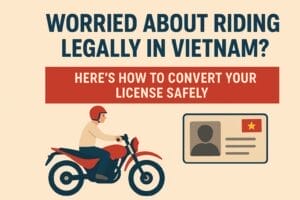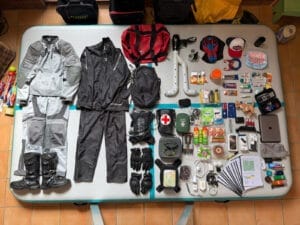Northwest Vietnam motorbike tour to Mai Chau, Ta Xua, Ngoc Chien, Sapa, & Thac Ba | Woods Family
1. Overview of Lao’s potential for motorbike tour
Nestled amidst the rugged mountains, lush jungles, and meandering rivers of Southeast Asia. It’s a hidden gem waiting to be discovered by adventurous souls: Laos. Known as the “Land of a Million Elephants,” Laos captivates travelers with its pristine natural beauty, rich cultural heritage, and warm hospitality. But beyond its serene temples and tranquil landscapes lies an adrenaline-fueled adventure waiting to unfold on the back of a dirt bike.
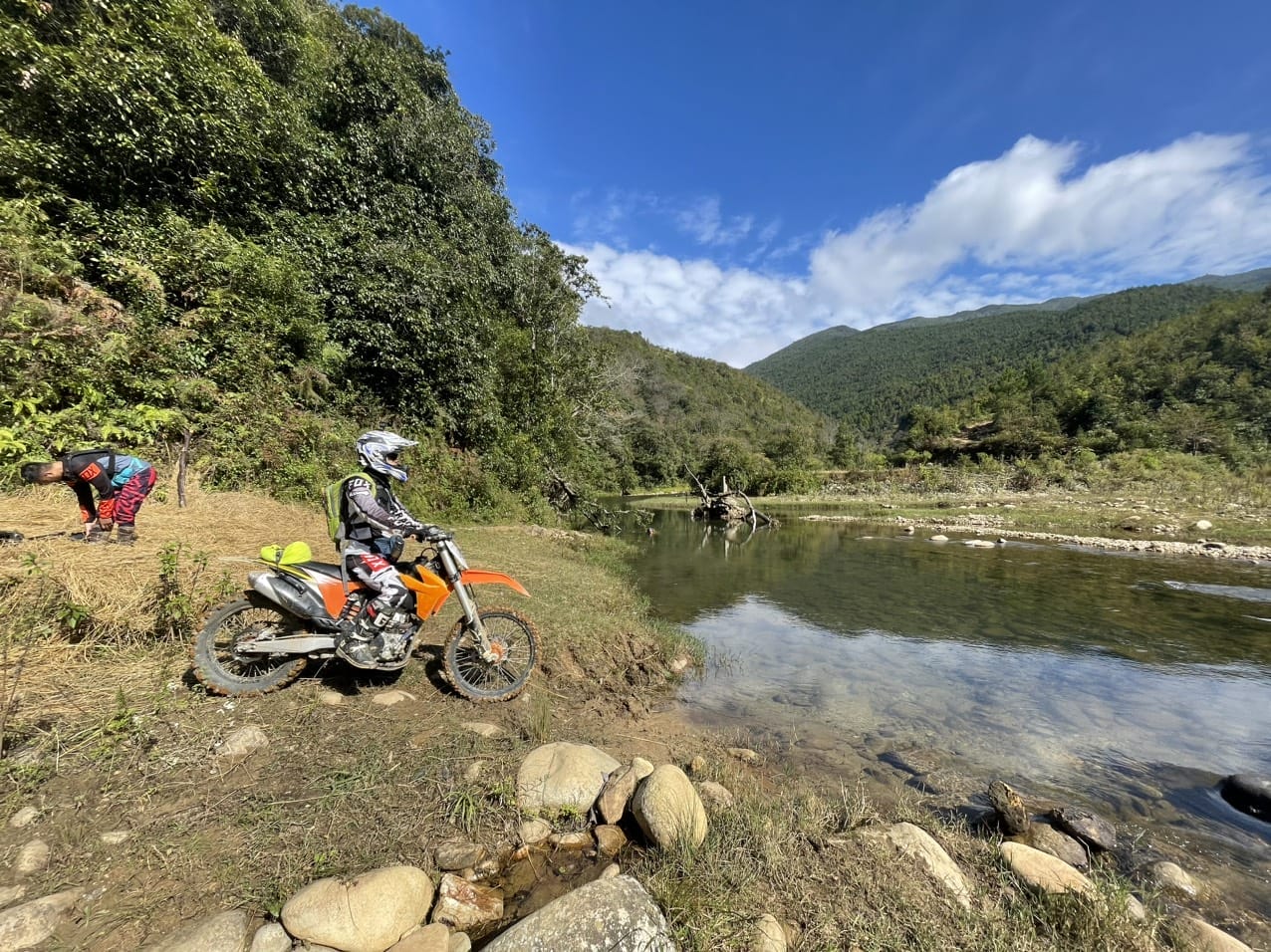
Embarking on a dirt bike tour in Laos offers a unique and exhilarating way to explore this enchanting country, venturing off the beaten path to uncover hidden gems, remote villages, and breathtaking vistas that few travelers ever experience. From rugged mountain trails to winding jungle paths and scenic river valleys, Laos beckons riders with its diverse terrain and endless opportunities for off-road exploration.
In this short introduction, we invite you to embark on a journey through the rugged landscapes and vibrant cultures of Laos, where every twist and turn of the trail promises a new adventure waiting to be discovered. So rev up your engines, embrace the spirit of adventure, and get ready to experience the thrill of dirt bike touring in the Land of a Million Elephants.
2. Searching for information & planning for a motorbike trip in advance
2.1. What are the best destinations in Laos that people should take motorbike tours to discover?
Laos is a stunning country with diverse landscapes, rich cultural heritage, and off-the-beaten-path destinations that are perfect for motorbike tours. Here are some of the best destinations in Laos that people should consider taking motorbike tours to discover:
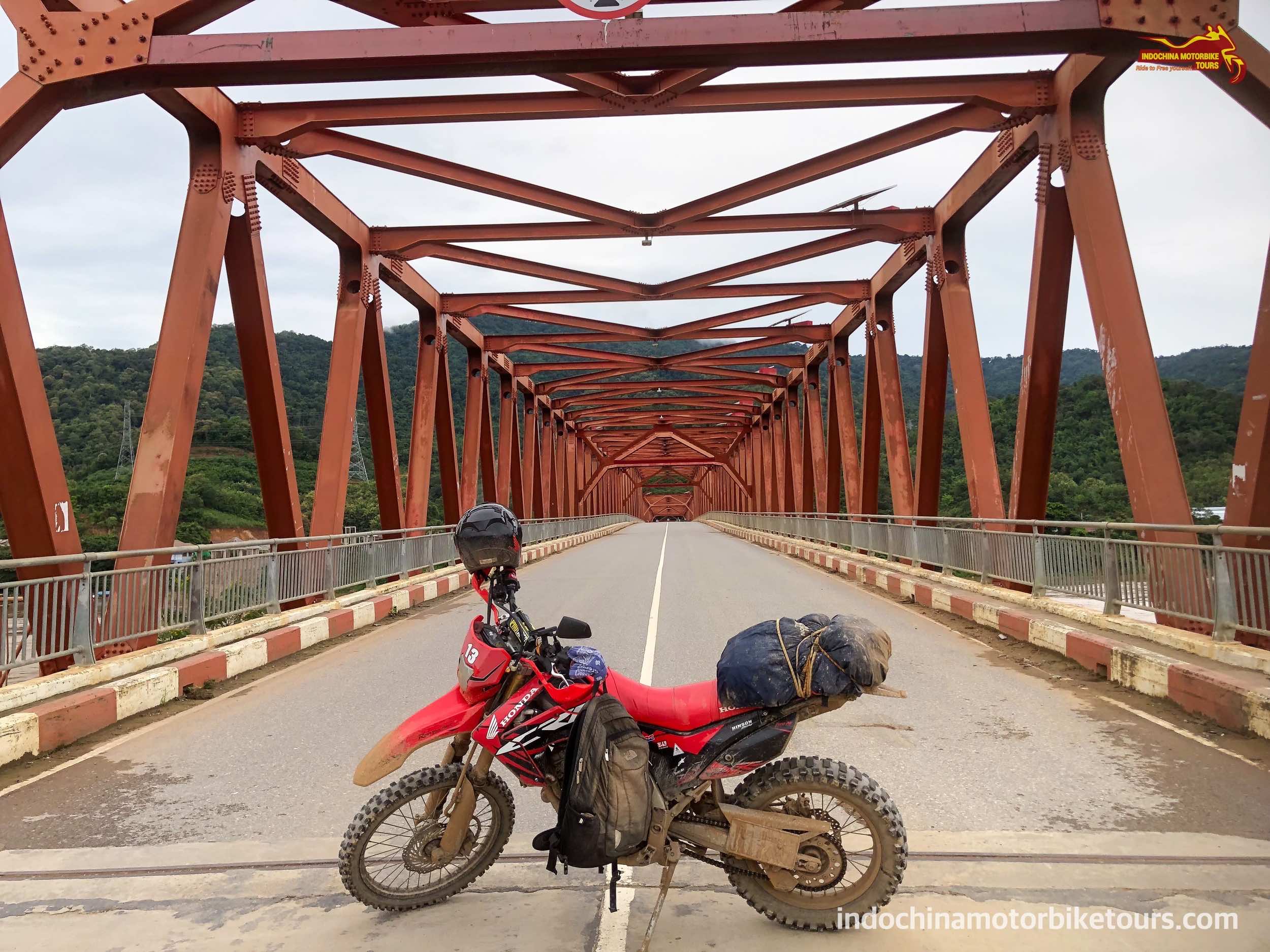
2.1.1. Luang Prabang:
Luang Prabang, a UNESCO World Heritage City nestled between the Mekong and Nam Khan rivers. It is renowned for its well-preserved architecture, Buddhist temples, and vibrant markets. Motorbike tours in Luang Prabang often include visits to nearby waterfalls, traditional villages, and scenic viewpoints.
2.1.2. Vang Vieng:
Situated amidst towering limestone karst mountains and lush greenery, Vang Vieng offers breathtaking scenery and outdoor adventures. Motorbike tours here typically include rides along scenic routes, visits to caves and lagoons, and opportunities for outdoor activities like kayaking and rock climbing.
2.1.3. Phonsavan (Plain of Jars):
Explore the mysterious Plain of Jars in Phonsavan, where ancient stone jars dating back thousands of years dot the landscape. Motorbike tours in Phonsavan often combine visits to archaeological sites with scenic rides through rural villages and the countryside.
2.1.4. Pakse and the Bolaven Plateau:
Base yourself in Pakse to explore the Bolaven Plateau, known for its lush coffee plantations, thundering waterfalls, and ethnic minority villages. Motorbike tours here offer the chance to ride along winding roads, visit local coffee farms, and discover hidden waterfalls.
2.1.5. Thakhek and the Thakhek Loop:
Embark on the famous Thakhek Loop, a scenic motorcycle route that winds through limestone karst landscapes, caves, and rivers in central Laos. Motorbike tours on the Thakhek Loop provide opportunities for cave exploration, trekking, and cultural encounters in remote villages.
2.1.6. Muang Ngoi Neua:
Accessible only by boat or motorbike, Muang Ngoi Neua is a peaceful village nestled along the Nam Ou River. Motorbike tours to Muang Ngoi Neua offer scenic rides through rural landscapes, opportunities for hiking and kayaking, and a chance to experience traditional village life.
2.1.7. Luang Namtha:
Explore the Nam Ha National Protected Area in Luang Namtha, a biodiverse region teeming with forests, rivers, and wildlife. Motorbike tours here include rides through pristine landscapes, visits to ethnic minority villages, and trekking adventures in the jungle.
2.1.8. 4000 Islands (Si Phan Don):
Conclude your motorbike tour in the tranquil 4000 Islands region, where the Mekong River widens and splits into thousands of islands. Motorbike tours here offer rides along scenic riverbanks, visits to waterfalls, and opportunities to relax in hammocks overlooking the river.
2.1.9. Kong Lor Cave:
Discover the awe-inspiring Kong Lor Cave, one of the largest cave systems in Laos. Embark on a thrilling motorbike ride to the cave entrance, then take a boat ride through the dark caverns, marveling at towering stalactites and hidden chambers.
2.1.10. Nam Ou River:
Follow the scenic Nam Ou River on a motorbike journey through northern Laos. Ride along the riverbanks, passing through remote villages, verdant forests, and rugged mountains, with opportunities for kayaking, trekking, and cultural encounters along the way.
These destinations in Laos offer motorbike enthusiasts a perfect blend of natural beauty, cultural immersion, and adventure, making them ideal for unforgettable motorbike tours. Whether you’re seeking adrenaline-fueled rides, serene countryside journeys, or cultural exploration, Laos has something to offer every rider.
2.2. When would be the best time to engage a motorbike tour in Laos?
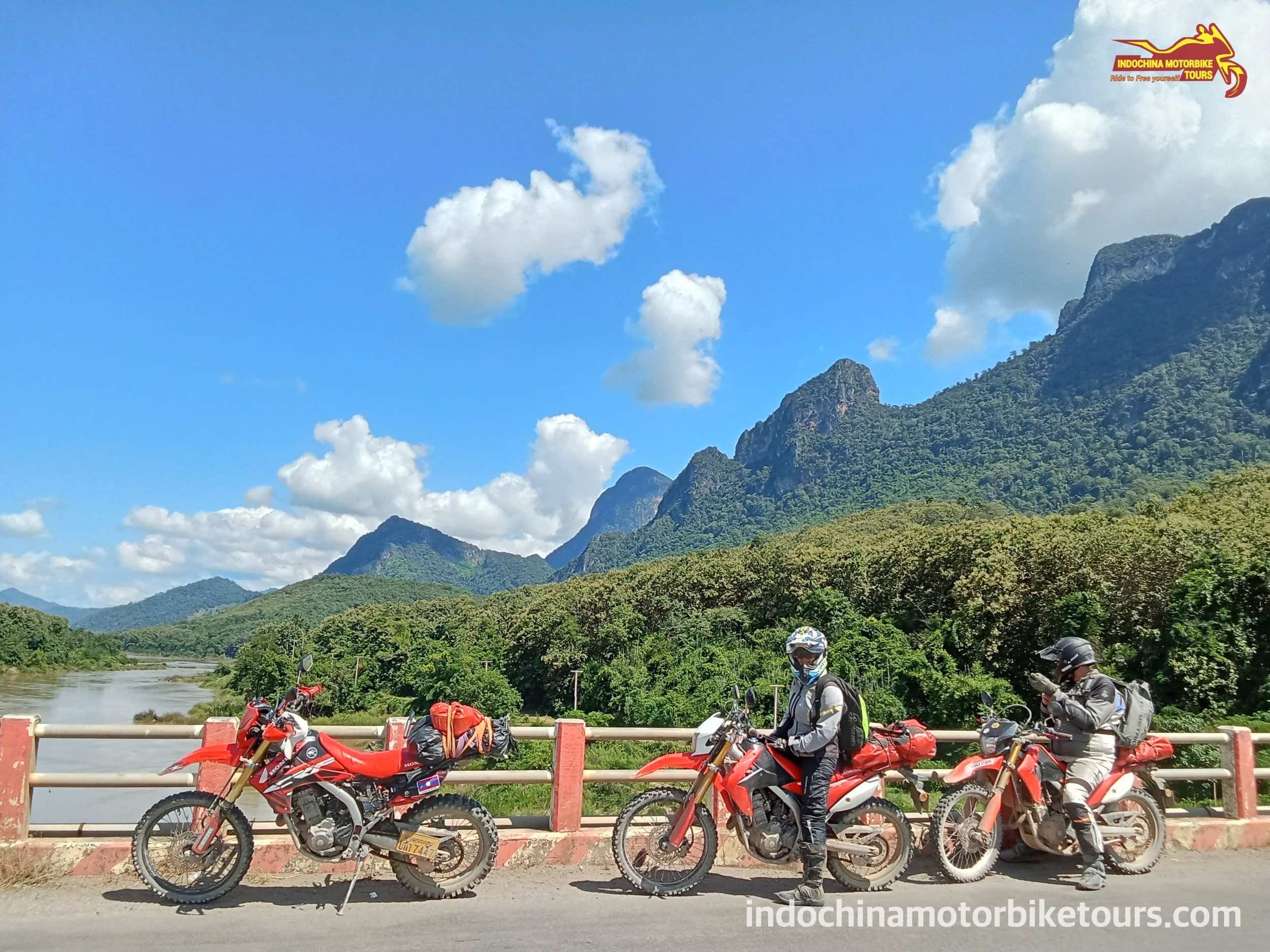
The best time to engage in a motorbike tour in Laos depends on the weather, road conditions, and overall travel experience you seek. Generally, the ideal time for motorbike tours in Laos is during the dry season, which typically runs from November to April. Here’s a detailed look at each season to help you decide:
2.2.1. Dry Season (November to April)
* Advantages:
+ Weather: The weather during the dry season is cooler and less humid, making it more comfortable for riding. Temperatures range from 15°C to 30°C (59°F to 86°F), with cooler conditions in the northern and mountainous regions.
+ Road Conditions: Roads are generally in better condition during the dry season, with less mud and fewer waterlogged areas, making it safer and more enjoyable for motorbike tours.
+ Scenic Beauty: Clear skies and minimal rainfall provide excellent visibility, allowing you to fully appreciate the stunning landscapes and scenic vistas of Laos.
* Disadvantages:
+ Tourist Crowds: The dry season is the peak tourist period in Laos, so popular destinations and accommodations may be more crowded and prices higher.
Highlights:
+ November to February: This period is particularly pleasant, with cooler temperatures and clear skies. It’s ideal for exploring the northern regions, such as Luang Prabang, Luang Namtha, and Phongsali.
+ March to April: Temperatures start to rise, but it’s still relatively dry. This is a good time to visit southern regions, such as Pakse and the Bolaven Plateau, where temperatures are more moderate.
2.2.2. Rainy Season (May to October)
* Advantages:
+ Lush Scenery: The rainy season brings lush, green landscapes and vibrant vegetation, making the scenery particularly beautiful and photogenic.
+ Fewer Tourists: There are fewer tourists during the rainy season, leading to less crowded attractions and potentially lower prices for accommodations and tours.
* Disadvantages:
+ Weather: The weather is hot and humid, with temperatures ranging from 25°C to 35°C (77°F to 95°F). Heavy rainfall and thunderstorms are common, especially from June to September.
+ Road Conditions: Roads can be challenging to navigate due to mud, flooding, and landslides. Off-road tracks may become impassable, increasing the risk of accidents.
Highlights:
May to June: Early rainy season with less intense rainfall, offering a balance between lush landscapes and relatively manageable road conditions.
July to September: The peak rainy season with heavy and frequent rains. This period is less ideal for motorbike tours due to the challenging road conditions.
October: Late rainy season with decreasing rainfall, making it a transitional period with improving road conditions and vibrant scenery.
2.2.3. Specific Regional Considerations
+ Northern Laos (e.g., Luang Prabang, Luang Namtha, Phongsali): Best visited during the cooler months from November to February to avoid extreme heat and rainfall.
+ Central Laos (e.g., Vang Vieng, Phonsavan, Thakhek Loop): Ideal during the entire dry season from November to April, offering moderate temperatures and good road conditions.
+ Southern Laos (e.g., Pakse, Bolaven Plateau, 4000 Islands): Best visited from November to March when temperatures are more comfortable and rainfall is minimal.
For the best overall experience, plan your motorbike tour in Laos during the dry season, specifically from November to February. This period offers comfortable weather, good road conditions, and stunning scenery. However, if you prefer fewer tourists and can handle some rain and challenging roads, the early rainy season (May to June) might also be a viable option. Always check current weather forecasts and road conditions before your trip to ensure a safe and enjoyable motorbike adventure in Laos.
2.3. Tips for riding motorbikes safely in Laos?
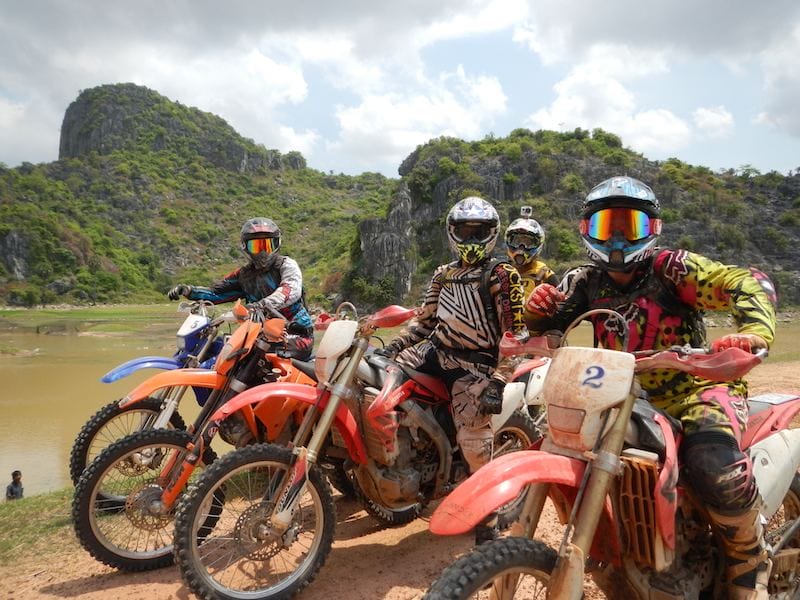
Riding motorbikes in Laos can be an exhilarating experience, but it’s essential to prioritize safety to ensure a smooth and enjoyable journey. Here are some tips for riding motorbikes safely in Laos:
2.3.1. Wear Protective Gear:
Always wear appropriate protective gear, including a helmet, gloves, sturdy footwear, and protective clothing. This gear provides vital protection in case of accidents and reduces the risk of injury.
2.3.2. Follow Traffic Laws:
Familiarize yourself with local traffic laws and regulations in Laos. Observe speed limits, traffic signals, and road signs, and adhere to local customs and driving practices.
2.3.3. Stay Alert and Vigilant:
Be vigilant and alert while riding, especially in busy urban areas and on crowded roads. Watch out for pedestrians, cyclists, and other vehicles, and anticipate potential hazards or obstacles on the road.
2.3.4. Drive Defensively:
Practice defensive driving techniques to minimize risks and avoid accidents. Maintain a safe following distance from other vehicles, use turn signals to indicate your intentions, and be prepared to react quickly to changing traffic conditions.
2.3.5. Be Mindful of Road Conditions:
Be mindful of road conditions, especially in rural and remote areas where roads may be unpaved, narrow, or in poor condition. Exercise caution when navigating potholes, gravel, mud, or uneven surfaces.
2.3.6. Stay Visible:
Ensure your motorcycle is equipped with working headlights, taillights, and turn signals to increase visibility, especially when riding at night or in low-light conditions. Wear bright or reflective clothing to make yourself more visible to other road users.
2.3.7. Avoid Night Riding:
Avoid riding at night whenever possible, as visibility is reduced, and the risk of accidents is higher. If you must ride at night, exercise extra caution, use headlights and reflective gear, and stay alert for obstacles on the road.
2.3.8. Stay Hydrated and Rested:
Stay hydrated and well-rested during long rides to maintain focus and concentration. Take regular breaks to stretch, rest, and refuel, especially on hot days or during extended rides.
2.3.9. Plan Your Route:
Plan your route in advance and familiarize yourself with the terrain, road conditions, and potential hazards along the way. Carry a map or GPS device to help navigate unfamiliar routes and stay on course.
2.3.10. Respect Local Customs:
Respect local customs, traditions, and cultural norms while riding in Laos. Be courteous and considerate to other road users, pedestrians, and residents, and avoid behaviors that may be perceived as disrespectful or offensive.
By following these tips and prioritizing safety, you can enjoy a smooth and memorable motorbike journey through the stunning landscapes and vibrant cultures of Laos. Remember to stay vigilant, respect local laws and customs, and embrace the spirit of adventure responsibly.
2.4. What to prepare a flawless motorbike tour to Laos?
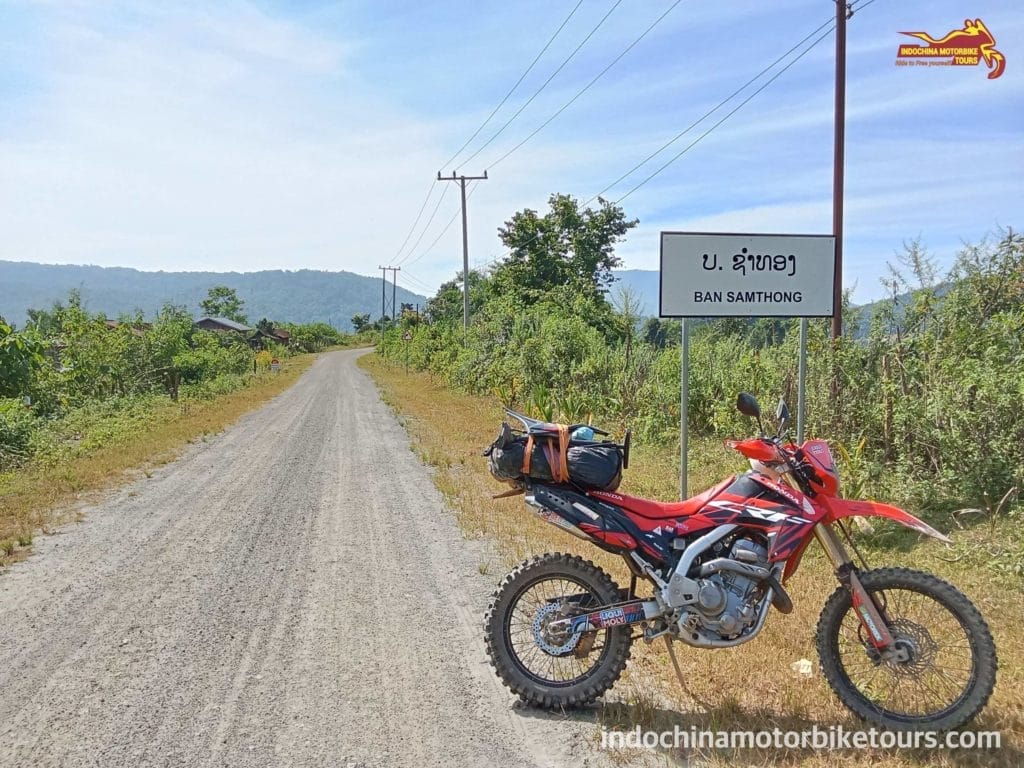
Embarking on a motorbike tour to Laos promises an exhilarating adventure filled with rugged landscapes, vibrant cultures, and unforgettable experiences. To ensure a flawless journey, it’s essential to prepare meticulously and pack accordingly. Here’s a comprehensive guide on what to prepare for your motorbike tour to Laos:
2.4.1. Reliable Motorcycle:
Choose a reliable and well-maintained motorcycle suited for long-distance travel and varied terrain.
Consider factors such as engine size, fuel efficiency, and comfort for extended rides.
Ensure the motorcycle is properly serviced and equipped with essential accessories, such as luggage racks, saddlebags, and a tool kit.
2.4.2. Necessary Documents:
Carry all necessary documents, including your passport, driver’s license, vehicle registration, and international driving permit (IDP).
Make copies of important documents and store them separately in case of loss or theft.
Check the visa requirements for Laos and obtain any necessary permits or visas before your departure.
2.4.3. Protective Gear:
Wear appropriate protective gear, including a helmet, gloves, riding jacket, pants, and sturdy boots.
Invest in high-quality gear designed for motorcycle touring to ensure comfort and safety on the road.
Consider additional protective gear such as knee pads, elbow guards, and reflective vests for added safety.
2.4.4. Repair Kit and Tools:
Pack a basic repair kit and tools to handle minor maintenance and repairs on the road.
Include items such as tire repair kits, tire inflator, spare tubes, chain lube, wrenches, and screwdrivers.
Familiarize yourself with basic motorcycle maintenance tasks, such as chain adjustment, oil changes, and tire repair.
2.4.5. Navigation Equipment:
Bring a reliable GPS device or smartphone with offline maps to navigate unfamiliar routes.
Consider downloading navigation apps such as Maps.me or Google Maps for offline use.
Carry a physical map of Laos as a backup in case of electronic device failure.
2.4.6. First Aid Kit:
Pack a well-stocked first aid kit with essential supplies for treating minor injuries and medical emergencies.
Include items such as bandages, antiseptic wipes, pain relievers, insect repellent, and any personal medications.
Familiarize yourself with basic first aid procedures and emergency protocols.
2.4.7. Camping Gear (Optional):
If planning to camp along the way, pack lightweight camping gear such as a tent, sleeping bag, sleeping pad, and cooking utensils.
Consider portable camping stoves, fuel canisters, and food supplies for self-sufficient camping experiences.
Check local regulations and camping restrictions in advance, and always practice Leave No Trace principles.
2.4.8. Weather-Appropriate Clothing:
Pack clothing suitable for the local climate and weather conditions in Laos.
Include lightweight, breathable layers for hot and humid conditions, as well as warmer layers for cooler evenings or higher elevations.
Consider quick-drying clothing and waterproof layers for protection against rain showers or unexpected weather changes.
2.4.9. Hydration and Snacks:
Stay hydrated during long rides by carrying plenty of water and electrolyte drinks.
Pack lightweight, non-perishable snacks such as nuts, dried fruits, energy bars, and trail mix for quick energy boosts on the road.
Plan regular rest stops to refuel and replenish energy levels throughout the day.
2.4.10. Travel Insurance:
Purchase comprehensive travel insurance that includes coverage for motorcycle touring, medical emergencies, evacuation, and trip cancellation or interruption.
Verify that your policy covers activities such as motorcycling, off-road riding, and adventure sports in Laos.
Keep a copy of your insurance policy and emergency contact information easily accessible during your journey.
2.4.11. Respect for Local Customs:
Familiarize yourself with local customs, traditions, and etiquette in Laos to show respect for the local culture.
Learn a few basic phrases in Lao language to communicate with locals and foster positive interactions.
Observe cultural norms regarding dress code, behavior in temples, and interactions with local communities.
By preparing diligently and packing appropriately for your motorbike tour to Laos, you’ll be well-equipped to embark on a flawless adventure through the stunning landscapes and vibrant cultures of this captivating country. Remember to stay flexible, embrace the spirit of exploration, and savor every moment of your journey on two wheels.
3. How to find a reputable local motorbike tour operator in Laos?
After searching all the necessary information to plan up a lifetime Laos Motorbike Tour, you still need a local hand to make your dream become true otherwise things would be messed up after your arrival because Laos is still less-open country for you to approach what you need. And When planning a motorbike adventure through the stunning landscapes of Laos, finding a reputable local motorbike operator is essential to ensure a safe, enjoyable, and memorable experience. With numerous options available, it can be challenging to choose the right one. This article provides a comprehensive guide on how to find and select a trustworthy local motorbike operator in Laos.
3.1. Conduct Thorough Online Research
3.1.1. Use Search Engines Effectively
Start your search by using specific keywords like “reputable motorbike tours in Laos,” “best motorbike tour operators in Laos,” or “Laos motorcycle rental reviews.” This will help you find websites and articles that list and review local operators.
3.1.2. Explore Travel Forums and Review Sites
Websites like TripAdvisor, Lonely Planet’s Thorn Tree Forum, and Reddit can be valuable resources. Look for threads and discussions about motorbike tours in Laos. Pay attention to recommendations, experiences, and warnings shared by fellow travelers.
3.1.3. Visit Official Websites
Check the official websites of motorbike tour operators you come across. A well-maintained, informative, and professional website often reflects the operator’s reliability. Look for detailed information about their tours, services, prices, and contact information.
3.2. Check Reviews and Testimonials
3.2.1. Read Reviews on Multiple Platforms
Ensure you read reviews on various platforms like Google Reviews, TripAdvisor, and Facebook. Consistent positive feedback across multiple platforms is a good indicator of a reputable operator.
3.2.2. Look for Detailed and Recent Reviews
Focus on detailed reviews that mention specific aspects of the tours, such as guide professionalism, bike condition, tour organization, and customer service. Recent reviews will give you an up-to-date picture of their current service quality.
3.2.3. Pay Attention to Negative Reviews
Negative reviews can provide insights into potential issues. However, consider how the operator responds to criticism. A professional and constructive response to negative feedback shows a commitment to customer satisfaction.
3.3. Evaluate Their Experience and Expertise
3.3.1. Years in Operation
An operator with several years of experience is likely to be more reliable. Longevity in the business often indicates stability and a proven track record.
3.3.2. Specialized Knowledge
Choose an operator that specializes in motorbike tours in Laos. Their local expertise will enhance your experience, providing you with deeper insights into the culture, history, and hidden gems of the region.
3.3.3. Guides’ Experience
Experienced guides are crucial for a successful tour. Check if the guides are local, their proficiency in English (or your preferred language), and their knowledge of the routes and local customs.
3.4. Assess the Quality of Their Motorbikes
3.4.1. Range and Condition of Bikes
Inquire about the types and conditions of motorbikes available. Reputable operators maintain their fleet well and offer a variety of bikes to suit different preferences and skill levels.
3.4.2. Maintenance Practices
Ask about their maintenance routines. Regularly serviced and well-maintained bikes reduce the risk of breakdowns and ensure a safer ride.
3.4.3. Availability of Spare Parts and Support
Check if the operator provides spare parts and mechanical support during the tour. This is particularly important for longer trips in remote areas.
3.5. Understand Their Safety Measures
* Safety Briefing
Reputable operators conduct thorough safety briefings before the tour. This should cover road rules, bike operation, emergency procedures, and safety gear.
* Safety Gear Provision
Ensure that the operator provides quality safety gear, including helmets, gloves, and protective clothing. Proper gear is essential for a safe riding experience.
* Emergency Support
Ask about their emergency support plan. Reliable operators should have a clear protocol for handling accidents or breakdowns, including first aid availability and access to medical facilities.
3.6. Compare Tour Packages and Prices
* Variety of Tour Options
Check the variety of tour packages offered. Whether you’re interested in short city tours or extended countryside adventures, a reputable operator should have options to suit your needs.
* Transparency in Pricing
Look for operators who provide transparent pricing. Beware of hidden fees and ensure that the quoted price includes all necessary services, such as bike rental, fuel, accommodation, and meals.
* Value for Money
Compare the overall value of the packages. Sometimes, slightly higher prices are justified by better services, more experienced guides, or superior bike quality.
3.7. Verify Their Legal Credentials
* Licensing and Insurance
Ensure the operator is legally licensed to conduct tours in Laos. They should also provide adequate insurance coverage for both the bikes and the riders.
* Membership in Professional Associations
Membership in professional or tourism associations can be a positive sign. It often indicates that the operator adheres to industry standards and best practices.
3.8. Communicate Directly
* Customer Service Quality
Reach out to the operator directly with any questions or concerns. How they respond can give you a good idea of their customer service quality and professionalism.
* Customization and Flexibility
Discuss your specific needs and preferences. Reputable operators should be willing to customize tours to some extent to meet your requirements.
3.9. Seek Recommendations from Fellow Travelers
* Word of Mouth
Personal recommendations from friends or fellow travelers can be invaluable. Ask around in travel communities, both online and offline, for suggestions.
* Social Media and Travel Groups
Join social media groups or online communities focused on travel in Laos. Post your queries and seek recommendations for motorbike tour operators.
3.10. Consider Sustainable and Responsible Tourism
* Environmental Practices
Check if the operator practices environmentally responsible tourism. This includes minimizing waste, respecting wildlife, and supporting conservation efforts.
* Community Engagement
Choose operators that engage with and support local communities. This might involve employing local guides, supporting local businesses, or contributing to community projects.
Finding a reputable local motorbike operator in Laos involves thorough research and careful consideration of various factors. By focusing on reviews, expertise, bike quality, safety measures, pricing transparency, legal credentials, and direct communication, you can identify a reliable operator that meets your needs. Remember to seek personal recommendations and consider the operator’s commitment to sustainable tourism for a truly enriching and responsible travel experience. Happy riding!
* Additional Tips:
+ Book in Advance: Popular operators can get booked up quickly, especially during peak travel seasons, so it’s wise to book your tour well in advance.
+ Prepare for the Ride: Ensure you have all necessary travel documents, proper riding gear, and an understanding of the local traffic laws.
+ Stay Flexible: Travel plans can change, so it’s always good to have some flexibility in your itinerary.
By following these guidelines, you can embark on a motorbike adventure in Laos with confidence, ready to explore its breathtaking landscapes and rich cultural heritage.
4. What necessary travel documents to prepare before going to Laos?
Traveling to Laos offers an exciting blend of rich cultural heritage, stunning natural landscapes, and unique adventures. However, to ensure a smooth and hassle-free trip, it’s crucial to prepare all the necessary travel documents in advance. This comprehensive guide will help you understand and gather everything you need before embarking on your journey to Laos.
4.1. Passport
* Validity
Ensure your passport is valid for at least six months beyond your planned departure date from Laos. Many countries enforce this rule, and failing to comply could result in denied entry.
* Blank Pages
Your passport should have at least two blank pages for stamps and visas. Some countries may require more, but two is typically sufficient for most travelers.
4.2. Passport Copies
Make several photocopies of your passport’s information page. Carry one copy with you, leave one with a trusted person back home, and keep a digital copy on your phone or cloud storage. These copies can be invaluable if your passport is lost or stolen.
4.3. Visa
* Types of Visas:
+ Tourist Visa
Most travelers will need a tourist visa to enter Laos. This visa is usually valid for 30 days and can be extended once for an additional 30 days.
+ Business Visa
If you are traveling for business purposes, you will need a business visa. This type of visa requires additional documentation, such as a letter of invitation from a Lao company.
* How to Apply:
+ Visa on Arrival: Laos offers a visa on arrival for citizens of many countries. To obtain this visa, you will need:
+ A passport-sized photo
The completed visa application form (available at the border or on the airplane)
The visa fee in US dollars (amount varies by nationality)
+ E-Visa: Laos also offers an e-visa option. You can apply online, and the process typically takes 3-5 business days. To apply, you will need:
=> A digital passport-sized photo
=> A scanned copy of your passport’s information page
=> A valid email address
=> A credit or debit card for the application fee
* Embassy Visa
For those preferring a traditional approach or needing a longer visa, you can apply at a Lao embassy or consulate in your home country. Check the specific requirements on the embassy’s website as they can vary.
* Visa Extension
If you plan to stay longer than the initial visa period, you can extend your visa at the immigration office in Vientiane or other major cities. The extension process usually takes one day.
4.4. Travel Insurance
* Coverage: Comprehensive travel insurance is essential. Your policy should cover:
+ Medical emergencies and hospitalization
+ Evacuation and repatriation
+ Lost or stolen luggage
* Trip cancellations and interruptions:
Adventure activities if you plan to engage in them (e.g., trekking, motorbiking)
Documentation
Carry a copy of your travel insurance policy, including the policy number and emergency contact information. Keep a digital copy on your phone or cloud storage as well.
4.5. Health Documents
* Vaccinations: While there are no mandatory vaccinations for entry into Laos, it’s recommended to be up-to-date on routine vaccines. Additionally, consider vaccinations for:
+ Hepatitis A and B
+ Typhoid
+ Japanese Encephalitis (if you plan to stay for an extended period or travel to rural areas)
+ Rabies (if you plan to be in close contact with animals)
+ COVID-19 Requirements
+ Check the latest COVID-19 entry requirements for Laos. This may include:
=> Proof of vaccination
=> A negative PCR test taken within a specified timeframe before departure
=> Health declaration forms
=> Prescription Medications
If you are on prescription medications, carry an adequate supply for the duration of your trip. It’s also advisable to carry a letter from your doctor detailing your medication, dosage, and the condition being treated. This can be useful at customs or if you need medical assistance during your trip.
4.6. Financial Documents
* Proof of Funds: Some countries require proof of sufficient funds for the duration of your stay. While this is not commonly enforced in Laos, it’s good practice to have:
* Bank statements
+ Credit card statements
+ Proof of employment or an invitation letter (if applicable)
* Currency and Banking
Lao Kip (LAK) is the official currency. However, US dollars and Thai Baht are widely accepted. Inform your bank of your travel plans to avoid any issues with international transactions. Also, consider carrying:
* A mix of cash and credit/debit cards
Information on the locations of ATMs in major cities
4.7. Transportation Documents
* Flight Tickets: Have copies of your flight tickets or e-tickets. These can be useful for entry and exit requirements.
* Itinerary and Accommodation Bookings: Print out copies of your accommodation bookings and itinerary. This information may be required at immigration or if requested by authorities.
* International Driving Permit (IDP): If you plan to rent a motorbike or car, an International Driving Permit is recommended, even if not always legally required. It can facilitate rentals and interactions with local authorities.
4.8. Emergency Contacts
* Personal Contacts: Create a list of emergency contacts, including family and friends, and keep it in a secure but accessible place.
* Local Contacts: Include contact information for your country’s embassy or consulate in Laos, local emergency services, and your travel insurance provider.
* Local Sim Card: Consider purchasing a local SIM card upon arrival for convenient access to local services and emergency contacts.
4.9. Travel Authorization Forms
* Entry and Exit Forms: Complete any required entry and exit forms. These are typically provided on the plane or at border crossings. Having your accommodation details and flight information handy will help fill these out quickly.
* Custom Declarations: Be prepared to declare any items that might require declaration. Familiarize yourself with customs regulations to avoid any issues upon arrival.
4.10. Cultural and Practical Documents
* Guidebooks and Maps: Carry a guidebook or download maps and travel apps to help you navigate and plan your activities in Laos. Offline maps can be particularly useful in areas with limited internet access.
* Language Tools: While English is spoken in tourist areas, knowing some basic Lao phrases can enhance your travel experience. Consider carrying a phrasebook or a translation app.
* Local Customs and Laws: Familiarize yourself with local customs and laws. Understanding these can help you show respect to the local culture and avoid unintentional offenses.
4.11. Backup and Security Measures
* Digital Backup: Ensure all your important documents are backed up digitally. Use secure cloud storage services like Google Drive, Dropbox, or OneDrive.
* Document Security: Keep your physical documents secure. Use a money belt or a secure bag to carry your passport, money, and other valuable documents. Utilize hotel safes for additional security.
Preparing all necessary travel documents before going to Laos is crucial for a smooth and enjoyable journey. By ensuring you have the right passports, visas, insurance, health documents, financial proofs, transportation documents, and emergency contacts, you can travel with confidence and focus on enjoying the rich culture and natural beauty that Laos has to offer.
Remember to keep both physical and digital copies of all important documents and familiarize yourself with local customs and regulations to enhance your travel experience. With thorough preparation, you can look forward to a seamless and memorable adventure in Laos. Safe travels!
5. What protection gears should you prepare before doing motorbike tour in Laos?
Preparing the right protection gear is essential for a safe and enjoyable motorbike tour in Laos. The diverse terrain and varying weather conditions require careful consideration of your gear. Here’s a comprehensive list of protection gear to ensure your safety during your motorbike adventure:
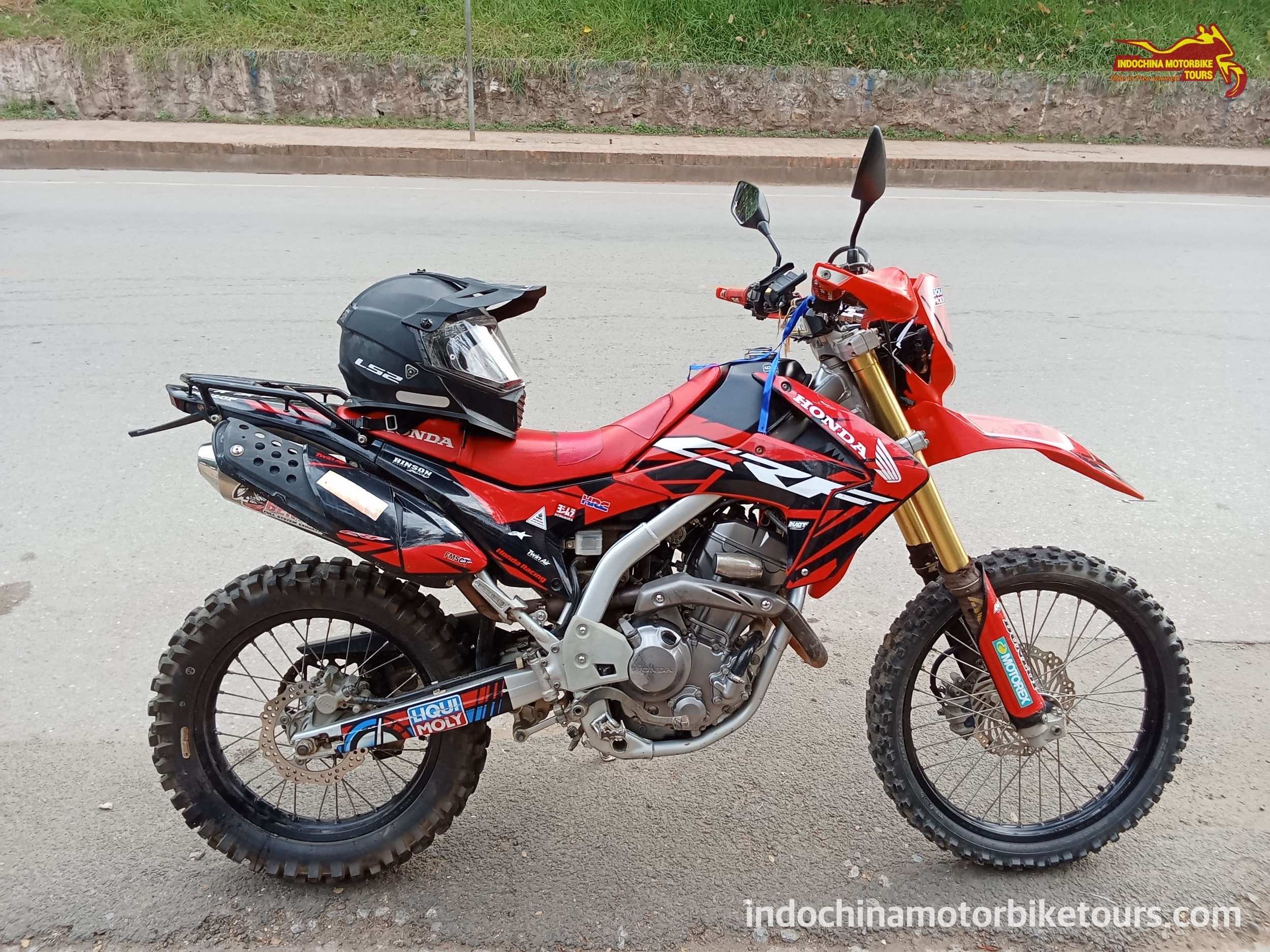
5.1. Helmet
Full-Face Helmet
Opt for a full-face helmet to provide maximum protection to your head, face, and eyes. Look for helmets that meet international safety standards, such as DOT (Department of Transportation) or ECE (Economic Commission for Europe) certification.
5.2. Riding Apparel
+ Jacket: Choose a durable motorcycle jacket made from abrasion-resistant materials like leather or textile. Look for jackets with built-in armor or padding on the elbows, shoulders, and back for added protection.
+ Pants: Wear motorcycle-specific pants or trousers with reinforced panels in high-impact areas. Consider options with integrated knee and hip armor for enhanced protection.
+ Gloves: Invest in high-quality motorcycle gloves to protect your hands from abrasions, impacts, and weather elements. Look for gloves with reinforced palms and knuckle protection.
+ Boots: Opt for sturdy, ankle-high motorcycle boots with non-slip soles and reinforced toe and ankle protection. Proper footwear will provide stability, support, and protection during rides.
5.3. Eye Protection
Riding Glasses or Goggles
Wear riding glasses or goggles to shield your eyes from dust, debris, insects, and harsh sunlight. Choose options with shatterproof lenses and UV protection for clear vision and eye safety.
5.4. Body Armor
Armored Vest or Shirt
Consider wearing an armored vest or shirt for additional protection to your chest, back, and spine. These garments feature built-in armor panels to absorb impacts and minimize injuries in case of accidents.
5.5. Rain Gear
Waterproof Jacket and Pants
Pack waterproof jackets and pants to stay dry during sudden rain showers or inclement weather. Look for lightweight, breathable options that can be easily layered over your riding gear.
Waterproof Gloves
Invest in waterproof gloves or glove covers to keep your hands dry and comfortable in wet conditions. Waterproof gloves will maintain grip and dexterity, reducing the risk of accidents.
5.6. Additional Accessories
+ Neck Buff or Balaclava: Carry a neck buff or balaclava to protect your neck and face from sunburn, windburn, and dust. These versatile accessories can also provide warmth in colder climates.
+ Earplugs: Bring earplugs to reduce wind noise and engine noise during long rides. Prolonged exposure to loud noises can cause hearing damage, so wearing earplugs is essential for rider comfort and safety.
+ Reflective Vest or Strips: Enhance your visibility to other motorists by wearing a reflective vest or attaching reflective strips to your riding gear. Increased visibility reduces the risk of accidents, especially during low-light conditions or nighttime riding.
Preparing the right protection gear is essential for a safe and enjoyable motorbike tour in Laos. From helmets and riding apparel to rain gear and additional accessories, each item plays a crucial role in safeguarding your well-being during your adventure. Prioritize safety by investing in high-quality, properly fitting gear that meets international safety standards. By wearing the right protection gear, you can ride with confidence and peace of mind, knowing that you’re well-prepared for whatever the road may bring. Safe travels!
6. What toiletry accessories should people prepare before doing a motorbike tour in Laos?
When embarking on a Laos motorbike tour, it’s essential to pack toiletry accessories to ensure personal hygiene and comfort throughout your journey. Here’s a comprehensive list of toiletry items to consider bringing along for your adventure:
6.1. Travel-Sized Toiletry Bottles
+ Shampoo: Pack a small bottle of shampoo to keep your hair clean and refreshed during the trip.
+ Conditioner: Consider bringing conditioner to keep your hair moisturized, especially in dry or humid conditions.
+ Body Wash or Soap: Opt for a travel-sized body wash or bar soap to cleanse your body after a day of riding.
+ Face Wash: Bring a gentle face wash to remove dirt, sweat, and sunscreen residue from your face.
+ Hand Soap: Pack a small container of liquid hand soap or hand sanitizer for hand hygiene, especially before meals.
6.2. Toothbrush and Toothpaste
+ Toothbrush: Bring a compact toothbrush that fits easily into your travel kit or toiletry bag.
+ Toothpaste: Pack a travel-sized tube of toothpaste to maintain oral hygiene throughout your journey.
6.3. Deodorant
+ Roll-On or Stick Deodorant: Choose a compact roll-on or stick deodorant to stay fresh and odor-free during long days of riding.
6.4. Hair Care Accessories
+ Hairbrush or Comb: Bring a compact hairbrush or comb to detangle hair and maintain your hairstyle.
+ Hair Ties or Clips: Pack hair ties or clips to keep your hair secure and out of your face while riding.
6.5. Skincare Products
+ Moisturizer: Carry a lightweight moisturizer to keep your skin hydrated, especially in dry or windy conditions.
+ Sunscreen: Protect your skin from harmful UV rays by applying sunscreen with a high SPF rating before riding each day.
+ Lip Balm with SPF: Bring a lip balm with SPF to prevent chapped lips and sunburn.
6.6. Personal Hygiene Items
+ Menstrual Products: If applicable, pack an ample supply of menstrual products such as tampons or pads.
+ Wet Wipes or Tissues: Carry travel-sized packs of wet wipes or tissues for quick clean-ups and personal hygiene.
+ Hand Sanitizer: Bring a small bottle of hand sanitizer to disinfect your hands when soap and water are not readily available.
6.7. First Aid Kit
+ Basic First Aid Supplies: Include adhesive bandages, antiseptic wipes, gauze pads, tweezers, and adhesive tape in your first aid kit to treat minor injuries.
+ Pain Relievers: Pack pain relievers such as ibuprofen or acetaminophen to alleviate headaches, muscle aches, or other minor pains.
+ Antidiarrheal Medication: Carry antidiarrheal medication to address gastrointestinal issues that may arise during your journey.
6.8. Other Essentials
+ Towel: Bring a compact, quick-drying travel towel for showering or freshening up.
+ Disposable Razor: Consider packing a disposable razor for grooming purposes.
+ Insect Repellent: Protect yourself from mosquito bites by applying insect repellent containing DEET or picaridin.
+ Travel-Sized Sewing Kit: Include a small sewing kit for quick repairs to clothing or gear.
By packing these essential toiletry accessories for your Laos motorbike tours, you can maintain personal hygiene and comfort throughout your journey. Consider the duration of your trip and the availability of supplies along your route when determining the quantities of toiletry items to pack. Additionally, opt for travel-sized or compact versions of products to save space and weight in your luggage. With proper preparation, you can enjoy a clean, refreshing, and enjoyable adventure on your motorbike tour in the stunning northern landscapes of Laos. Safe travels!

